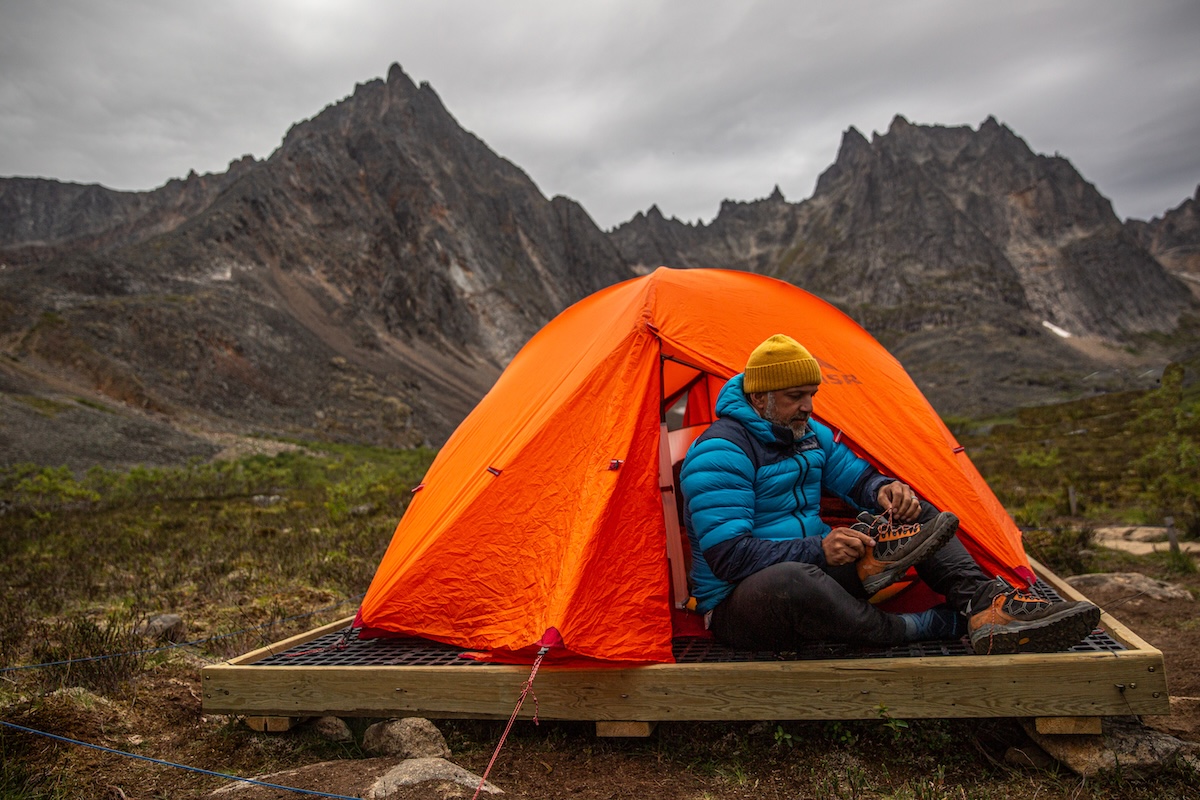
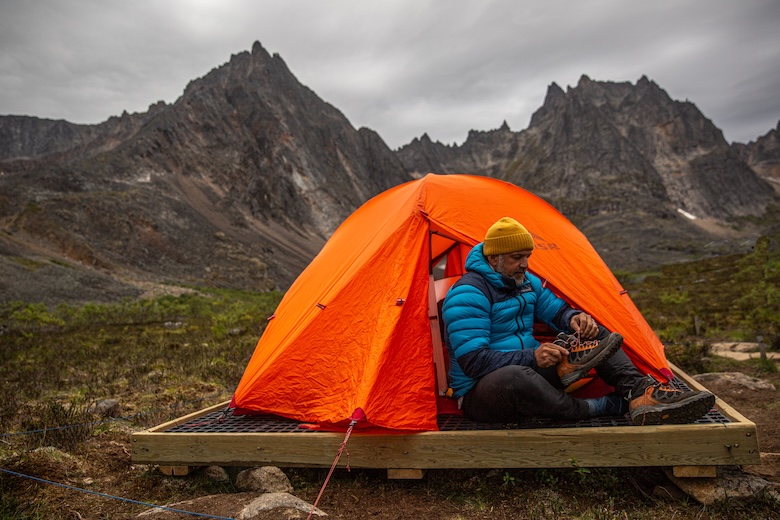
Whether you’re a first-time backpacker or a seasoned veteran, everyone could use a good packing list to make sure they’re prepared before hitting the trail. Our detailed checklist below covers everything from critical backpacking equipment (tent, pack, sleeping bag, etc.) to kitchen gear, footwear and clothing, health and hygiene products, and personal items and extras. For more information on each product category, many of the headings link to our detailed product round-ups, which are the culmination of years of testing—from international trips in Peru and Patagonia to romps on trails across the Pacific Northwest and Mountain West. To see all our product recommendations in one place, check out our detailed backpacking gear reviews.
| Backpacking Equipment | Kitchen Gear | Footwear & Clothing | Health & Hygiene | Personal Items & Extras |
|---|---|---|---|---|
|
❒ Backpacking tent ❒ Backpacking pack ❒ Sleeping bag ❒ Sleeping pad ❒ Water filter or purifier ❒ Hydration bladder/bottles ❒ Headlamp
❒ Trekking poles ❒ Daypack ❒ Chair/sit pad ❒ Backpacking pillow ❒ Sleeping bag liner ❒ Footprint/ground cloth ❒ Extra stakes & guylines |
❒ Backpacking stove & fuel ❒ Backpacking food ❒ Cookware & utensils ❒ Pot ❒ Spork/spoon ❒ Mug or cup ❒ Tea bags ❒ Coffee press or dripper ❒ Electrolyte tablets |
❒ Hiking boots or shoes ❒ Hiking socks ❒ Hiking pants or shorts ❒ Rain jacket or hardshell ❒ Down or synthetic jacket ❒ Baselayers
❒ Camp shoes ❒ Ball cap ❒ Sun protection shirt ❒ Rain pants ❒ Beanie ❒ Gloves ❒ Gaiters ❒ Neck gaiter/buff |
❒ Toiletries ❒ Toothbrush ❒ Toothpaste ❒ Toilet paper/wipes ❒ Wag bags/trowel ❒ Hand sanitizer ❒ Deodorant ❒ Medications ❒ Lip balm ❒ First aid kit
❒ Sunscreen ❒ Sunglasses ❒ Insect repellent
❒ Mosquito net ❒ Sun hat
|
❒ Basic repair kit ❒ Navigation ❒ Phone & charger ❒ Batteries/solar charger ❒ Notebook & pen/pencil ❒ Book or Kindle ❒ Bear canister & spray ❒ Ziploc bags ❒ Whistle ❒ Lighter/matches ❒ Backup water purification ❒ Pack rain cover ❒ Moleskin ❒ Quick-drying towel ❒ ID, cards, & cash ❒ Permit/reservation ❒ Forest Service/park pass ❒ Camera ❒ Satellite messenger |
Editor's note: The table above provides a brief overview of what you'll need to get outside, but our full PDF version is printable and offers a more comprehensive breakdown of the necessities and nice-to-haves.
See Our Backpacking Checklist PDF
Whether you’re headed out for a quick overnight trip or embarking on a multi-day mission deep into the backcountry, the gear below is what we bring on every trip to comfortably spend days and nights outdoors. We've also included a handful of optional items that may or may not be worth packing depending on your preferences and objective(s).
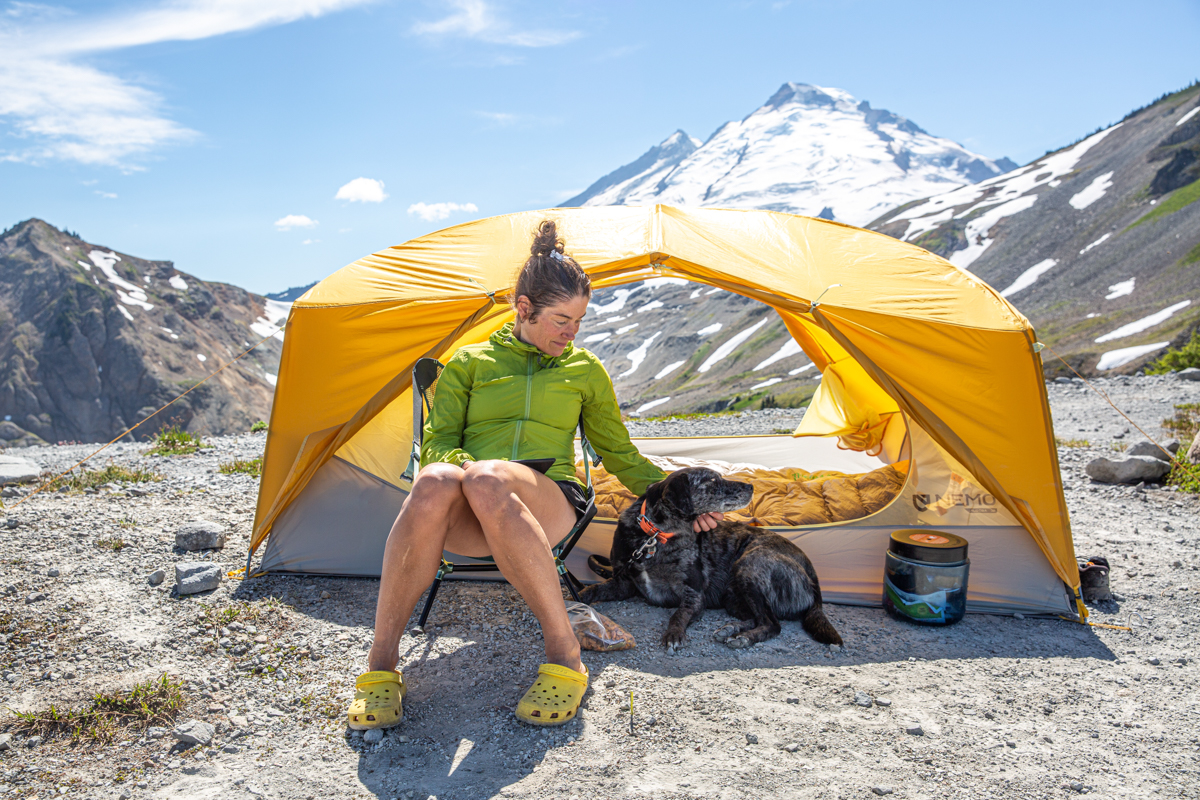
Our top pick: Big Agnes Copper Spur HV UL2 ($550)
What we like: Highly competitive combination of weight, livability, and ease of use.
What we don’t: Expensive; thin floor is susceptible to tears (we advise using a footprint).
Our top pick: Osprey Atmos AG 65 ($340)
What we like: Great carrying comfort, thoughtful organization, and class-leading breathability.
What we don’t: On the pricey end and far from the lightest design available—Osprey's own Exos 58 is nearly 2 pounds lighter and $80 cheaper.
Our top pick: Feathered Friends Swallow UL 20 ($629-649)
What we like: Very warm for the weight and built by a very reputable down specialist.
What we don’t: Feathered Friends bags don't come cheap, and they lack some modern features (if the latter is important to you, check out the Nemo Disco 15 Endless Promise).
Our top pick: Therm-a-Rest NeoAir XLite NXT ($200-240)
What we like: Three-season warmth and great comfort at a competitively low weight.
What we don’t: Pricey; warm-weather backpackers can save with a lower R-value pad.
Our top pick: Sawyer Squeeze ($46)
What we like: Impressively light, fast flow rate, and covered by Sawyer’s lifetime warranty.
What we don’t: Best for the solo backpacker—groups will likely prefer a larger gravity filter like the Platypus GravityWorks 4L.
Our top pick: Osprey Hydraulics 3L ($50)
What we like: Highly reliable and built to last.
What we don’t: Rigid backer adds weight and bulk (you can’t roll it up when empty).
Our top pick: Petzl Actik Core ($85)
What we like: Great output, long battery life (via AAAs or the rechargeable battery), and easy-to-use interface in a feathery build.
What we don't: Expensive and not the most water-resistant option on the market.
Whether you’re making gourmet dinners or eating prepackaged dehydrated meals, you’ll need a way to heat it all up. In addition to the big-ticket necessities like a stove and food, be sure not to overlook the smaller, easier-to-forget items like cookware, utensils, and a camp mug for hot beverages. For the ultimate in convenience, you may want to consider an integrated cook set like the GSI Outdoors Halulite Minimalist II, which includes a 0.6-liter pot that doubles as a mug, a folding fork/spoon, and a silicone gripper for safe handling.
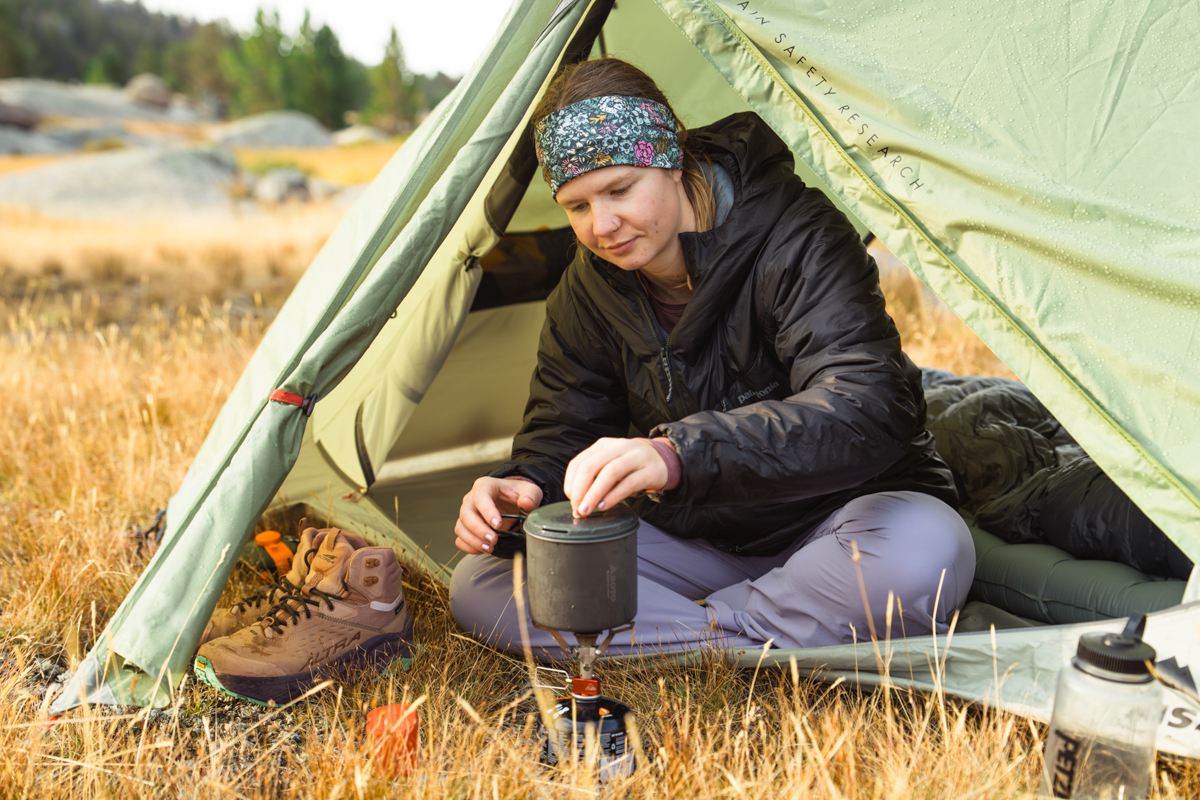
Our top pick: MSR PocketRocket 2 ($60)
What we like: Surprisingly powerful for how light and cheap it is.
What we don’t: Noticeably less stable and wind-resistant than integrated canister systems like the Jetboil Flash.
Our top pick: Backpacker's Pantry ($10-$13)
What we like: Affordably priced, easy to find, and extensive selection of tasty meals.
What we don’t: Relatively long cook times and less innovative than some upstarts—we'd point backcountry foodies to Gastro Gnome instead.
The clothes you pack when backpacking will largely depend on expected temperature and weather conditions, but it all starts with a quality layering system: baselayer, midlayer (insulation), and rain shell. Good hiking footwear can also go a long way toward maximizing your overall comfort on high-mileage trail days. And if you're heading out in the shoulder seasons or venturing into the alpine, don't forget cold-weather gear like a hat and gloves.
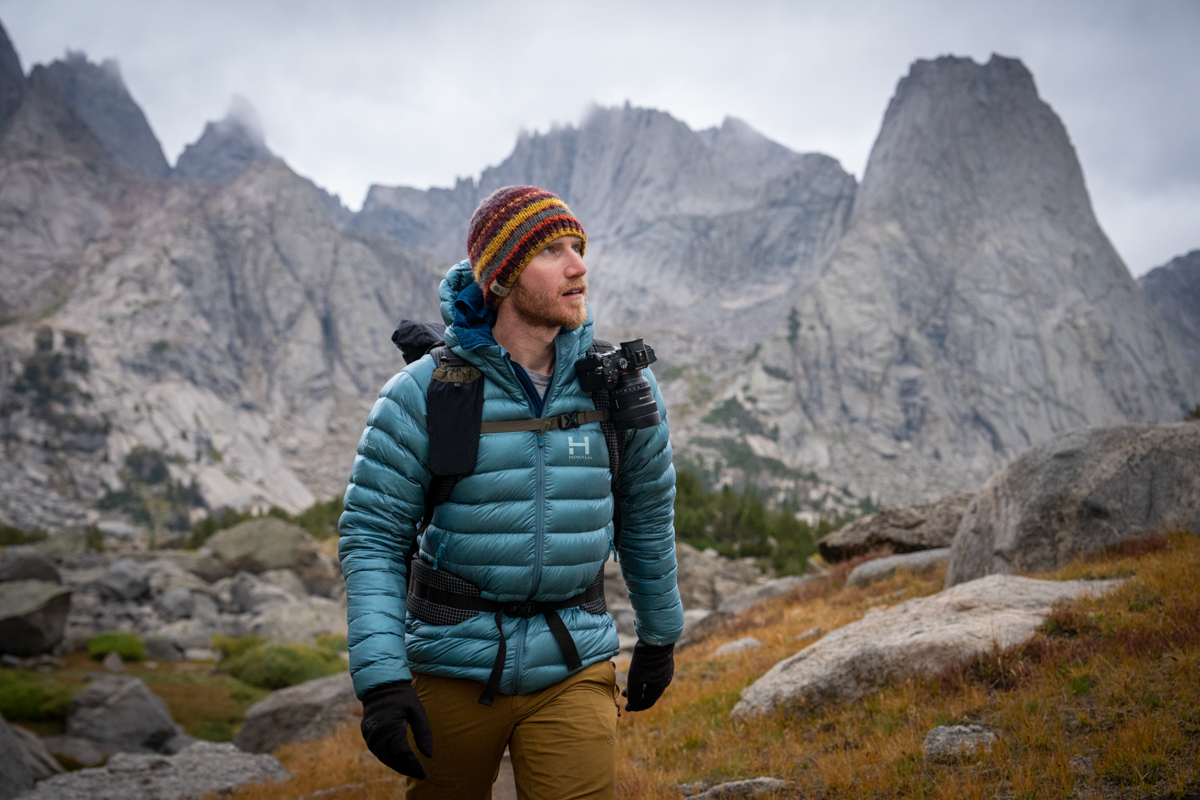
Our top pick: Salomon X Ultra 5 Mid GTX ($185)
What we like: Trail runner-like agility with hiking boot protection and stability.
What we don’t: Those shuttling serious weight might want to step up to a more cushioned and supportive design like Salomon’s Quest 4.
Our top pick: Darn Tough Micro Crew Cushion ($26)
What we like: Great padding and breathability for three-season use; backed by Darn Tough’s lifetime warranty.
What we don’t: Highly durable build sacrifices a little plushness; a bit too thick for sweltering summer days (we prefer Smartwool's Run Zero Cushion for hot outings).
Our top pick: Outdoor Research Ferrosi ($99)
What we like: Comfortably stretchy, breathable, and lightweight while still boasting durability.
What we don’t: Doesn’t crossover very well into casual use, and we like pants with an integrated belt, like Prana’s Stretch Zion.
Our top pick: Patagonia Torrentshell 3L ($179)
What we like: Confidence-inspiring protection and classy looks at a hard-to-beat price.
What we don’t: Fairly crinkly and stiff; doesn’t have a chest pocket.
Our top pick: Patagonia Down Sweater ($279)
What we like: Comfortable fabrics, competitive warmth for the weight, and highly versatile.
What we don’t: Not the lightest option for dedicated backcountry use—if weight is a top priority, check out Rab’s Mythic Alpine Light.
Our top pick: Smartwool Classic Thermal Merino 1/4 Zip ($120)
What we like: All-merino build is warm and comfortable, regulates temperature well, and doesn’t hold a stink like polyester.
What we don’t: Pricey, too warm for high-output use, and requires more care to last than synthetics like Patagonia's Capilene Midweight Crew.
Many backpackers are willing to eschew creature comforts in the name of weight savings, but hygiene is one area where we don’t advise skimping. We consider the items below the bare necessities for staying clean and comfortable in the backcountry, and make sure to bring the appropriate sun and bug protection, too.
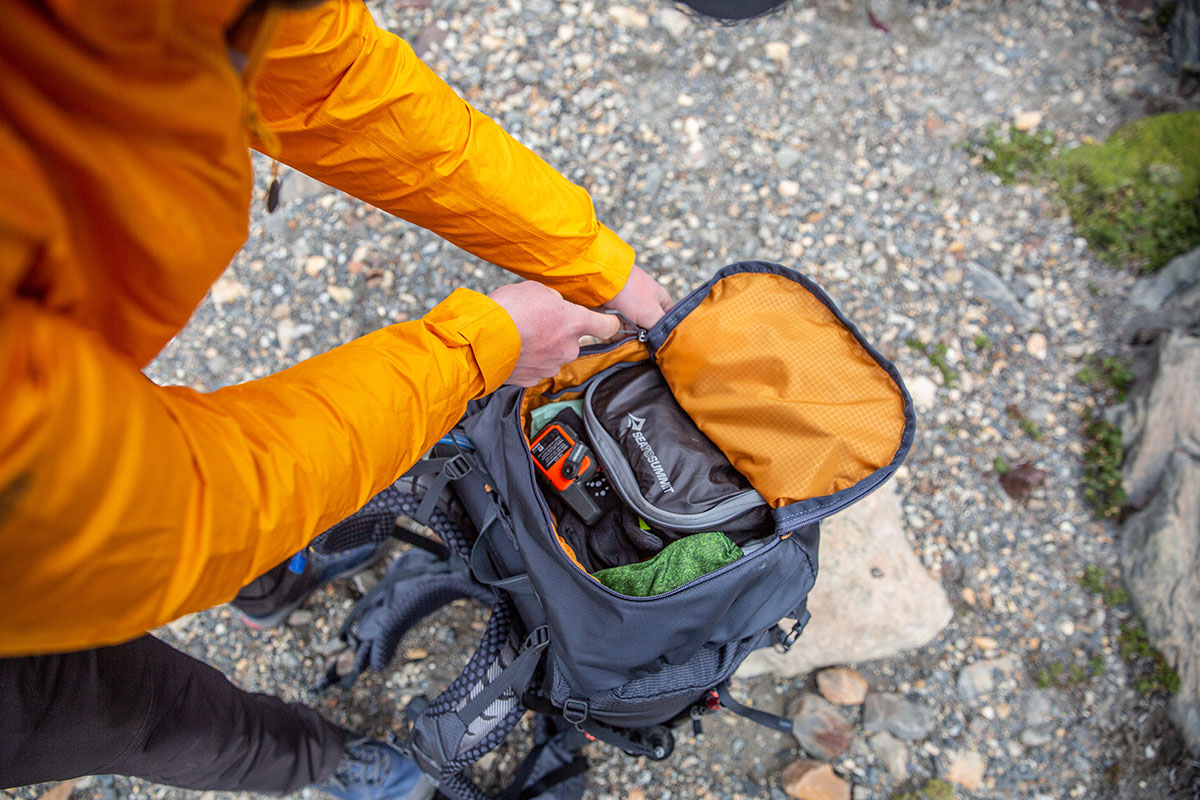
Most items on the above checklist are obvious backpacking essentials that you probably won't leave behind, but forgetting your wallet or cell phone can be just as much of a trip-ender as leaving your tent at home. On that note, here are some of the smaller personal items that you’ll want to consider before heading out. Some of them (like a notebook or Kindle) certainly aren't necessary, but can help make your trip more enjoyable.
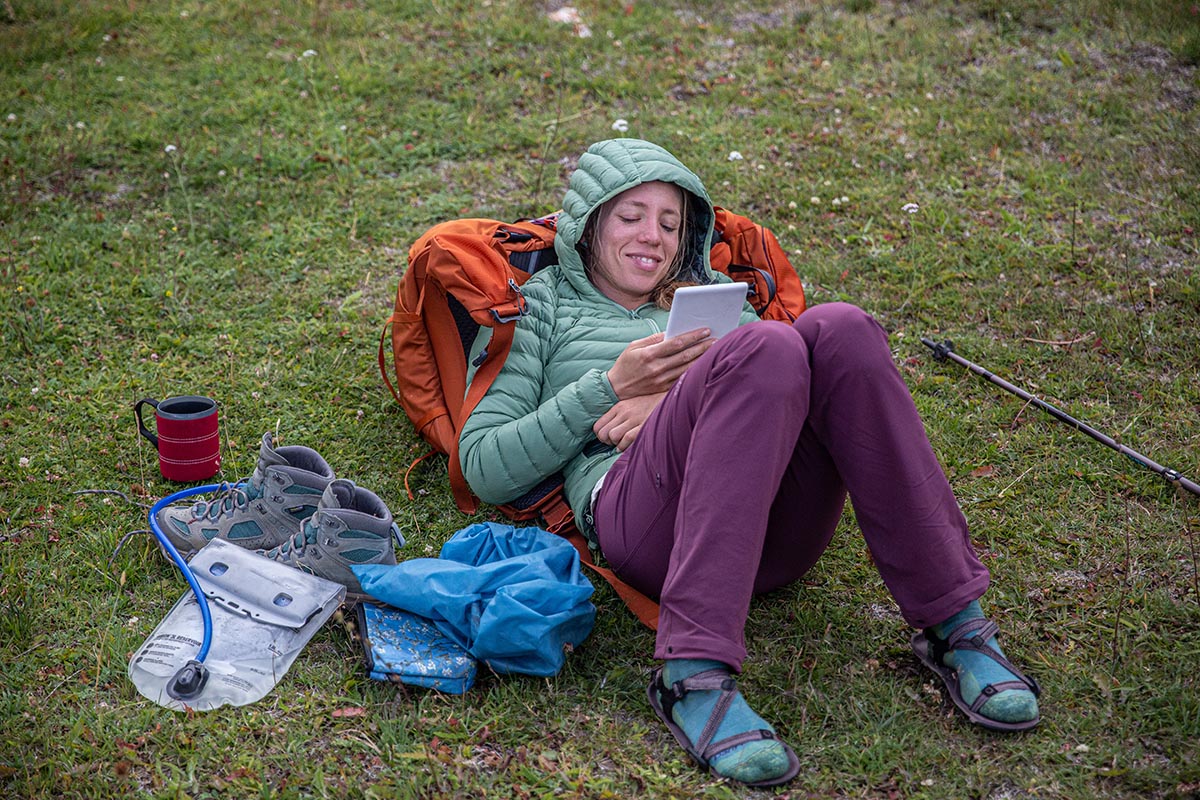
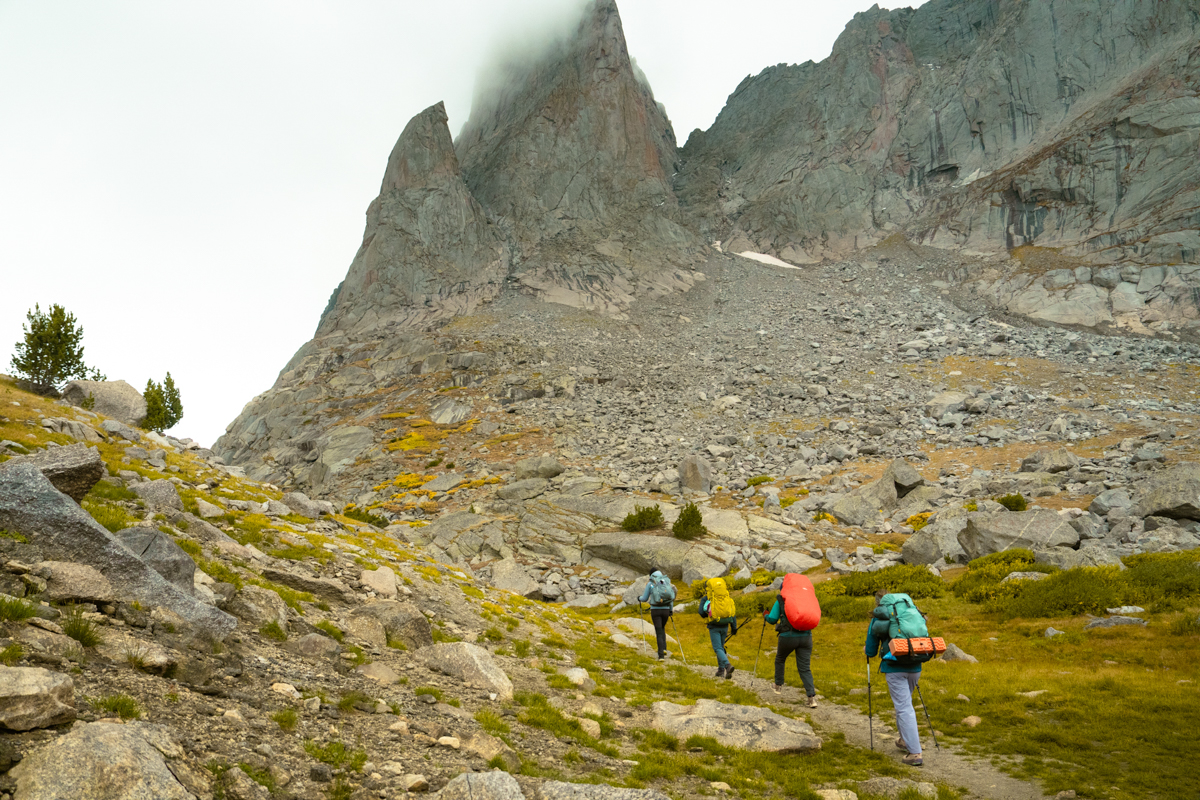
Perhaps our Seattle roots makes us biased, but we do much of our gear shopping at REI Co-op. The selection is excellent, the return policy is generous, the staff are generally knowledgeable and helpful, and you get the bonus of a brick-and-mortar store if you prefer to shop in person. Another good option for online shopping is Backcountry.com, which has free standard shipping on orders over $69 and a solid selection overall (we use Backcountry more for winter purchases, but it does well in the hiking/camping world, as well). For cheaper items and those who need gear quickly, it’s hard to beat Amazon and the sheer volume of sellers and product options. Last but definitely not least, we always encourage buying gear at your local shop. It’s a great way to support the community, get real information about your trip, and be able to try things on in person.
Back to Our Backpacking Checklist See Our Backpacking Gear Reviews